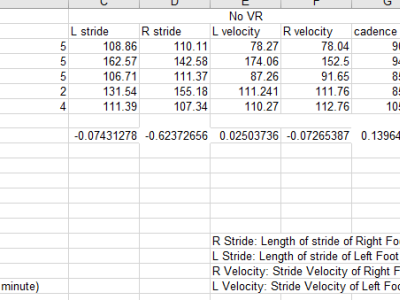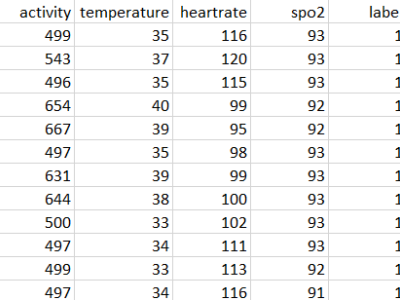
The dataset gives information about the different gait metrics such as stride length for left and right foot, stride velocity for left and right foot and cadence collected from human subjects
in a controlled environment in the presence of VR(virtual reality) scenes such as positve, negative and neutral. The PHQ-9 score of the subjects is collected and correlated with
the gait score. Decriptive statitics such as median are also collected for the difference in the gait values of specific VR environments.
- Categories:



